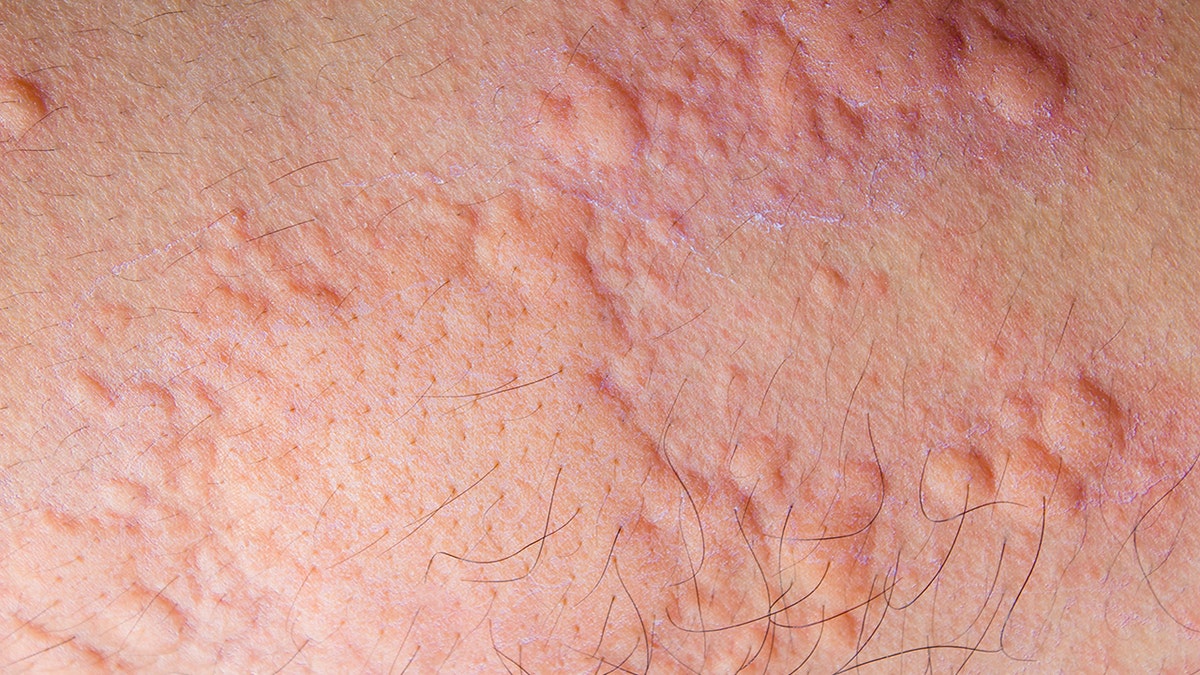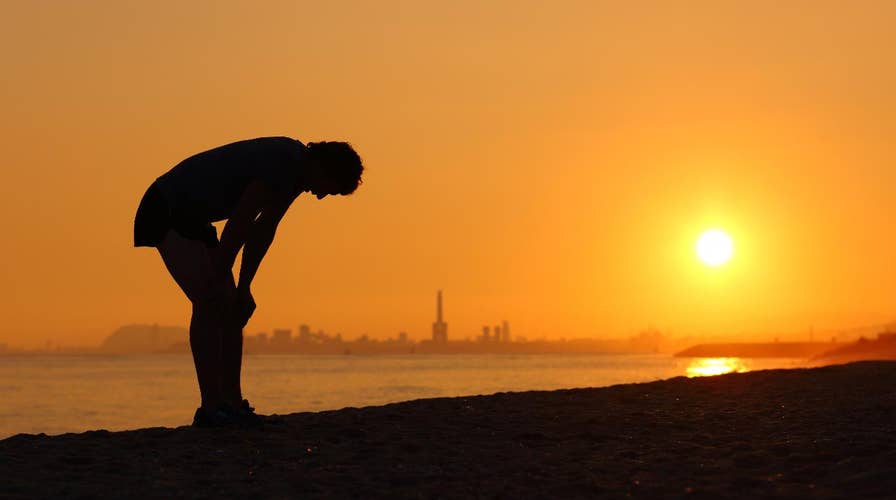Heat illnesses: 3 dangerous effects of extreme heat
From life-threatening heat strokes to unsightly heat hives, Fox News’ Dr. Manny Alvarez sits down with an internal medicine specialist to breakdown the top ways extreme heat can affect the body.
Heat waves or hot weather that lasts for several days is not only uncomfortable, but also dangerous to your health.
From life-threatening heat strokes to unsightly heat hives, here’s a breakdown of the top ways extreme heat can affect the body.
Heat stroke
The human body’s normal temperature is about 98.7 degrees Fahrenheit. In order for the body to stay within safe limits of this temperature, it must get rid of its excess heat. When your body is faced with internal or external factors that raise its temperature, like a steaming hot day, the brain sends signals that begin cooling mechanisms such as sweating.
Cardiologist Dr. Kevin Campbell explained that when a heat stroke occurs, our bodies are unable to keep up with the cooling demands that a very hot and humid day can create.
“Our bodies are designed to cool themselves through sweating. In cases of an extreme heat stroke, a person may actually notice they are no longer sweating,” Campbell told Fox News.
This common summer condition is typically the result of prolonged exposure to high temperatures and happens when your body temperature rises to 104 F or higher.

Heat stroke occurs when the body can't regulate its cooling demands on hot and humid days. (iStock)
VIRGINIA WOMAN DONATES KIDNEY TO STRANGER: 'GOD CALLED ME TO DO THIS'
Other heat stroke symptoms include fainting, confusion, lack of sweating, nausea and vomiting; seizures, rapid, shallow breathing, racing heart rate and headaches.
Anyone can develop heat stroke, but certain groups are more at risk than others.
“The very young, the very old, and those with chronic diseases such as heart disease, lung disease, asthma and diabetes are much more susceptible than others,” Dr. Campbell said.
Heat stroke can be life-threatening, so it is important to take immediate action if you think you or someone you’re with is experiencing these symptoms.
“The first thing people have to do when this happens is obviously remove yourself from the exposure, from the heat,” Dr. Albert Ahn, an internal medicine specialist at NYU Langone, told Fox News.
“Get into a cool area and cool the body down. That can be done in a variety of ways. At home it can be done with cool baths, cold compresses, ice packs and things of that sort to certain parts of the body [like your head, neck and armpits]."
You should also make sure someone calls 911 if you begin to experience chest pain, shortness of breath, dizziness or loss of consciousness, Dr. Ahn added.
Heat exhaustion
Heat exhaustion is more mild in severity than a heat stroke, but its cause is similar. It's due to your body’s temperature rising, and it’s often associated with dehydration.
“Heat exhaustion usually comes from an acute exposure to heat. It can happen when people are more active, exercising outdoors, working outdoors … It’s the effects of exertion in that type of weather,” Dr. Ahn said.
Unlike a heat stroke, when heat exhaustion occurs, you may find yourself sweating profusely.
Other symptoms include headache, fainting, extreme thirst, dizziness, nausea, vomiting or diarrhea, muscle cramps, fatigue and rapid heartbeat.
Heat exhaustion is often a precursor to heat stroke, so it’s important to get out of the heat and rest if you present any symptoms. You should also drink plenty of fluids, remove any tight clothing, and take a cool shower or bath.
NAVY VETERAN WITH MS, 94, GOES FOR GOLD IN NATIONAL VETERANS WHEELCHAIR GAMES
Heat hives

Heat hives are an allergic reaction to sweat caused by overheating, or the heat itself. (iStock)
Heat hives, also known as cholinergic urticaria (CU), are a type of hives that occur when the body’s temperature is raised. They tend to break out when you're sweaty from a workout, nervous or just plain hot. It’s one of the most common types of hives and occurs in at least 15 percent of the population.
This condition is usually triggered by allergic reactions to heat and/or sweat. It can be triggered by a variety of scenarios like exercising, taking a hot bath or shower, being in a warm room, eating spicy foods, being upset or experiencing anxiety.
“The hives are an allergic reaction, and in this case it’s an immune reaction to the actual heat, the effects of heat on the skin,” Ahn said. “And the hives usually cause this very itchy, sort of raised circular lesions on the skin.”
CU hives can appear anywhere on your body, but usually show up on your chest, face, upper back and arms. They can occur very quickly after a person begins to sweat or gets overheated and usually go away on their own after the person is able to cool themselves down.
Heat hives are more common in young adults, but they can happen to anyone at any age. Acute urticaria usually lasts less than six weeks, but chronic hives can last decades. One study found the average duration of CU was 7.5 years.
“About one in five adults with chronic hives are likely to have a physical or inducible-type hives that may be triggered by heat (warming of body temperature) as well as cold, and much less common, sunlight,” Dr. Clifford Bassett, an allergist and founder of the Allergy & Asthma Care of New York, told Fox News.
If you have CU, the best treatment is avoidance of activities that cause your body to overheat. Antihistamines can also help calm and control CU hives, and, in some more severe cases, your doctor may recommend steroids.
FOLLOW US ON FACEBOOK FOR MORE HEALTH NEWS
To help prevent any heat-related illness, Dr. Ahn suggests staying out of the sun on extremely hot and humid days and drinking lots of extra water to preemptively combat dehydration.
“Load up on fluids beforehand and during your time being exposed [to heat],” Dr. Ahn said. “I’d say probably 6 to 8 ounces every 15 to 20 minutes while you’re out in the sun, that’s going to be the best way to really prevent any of these things from happening.”
